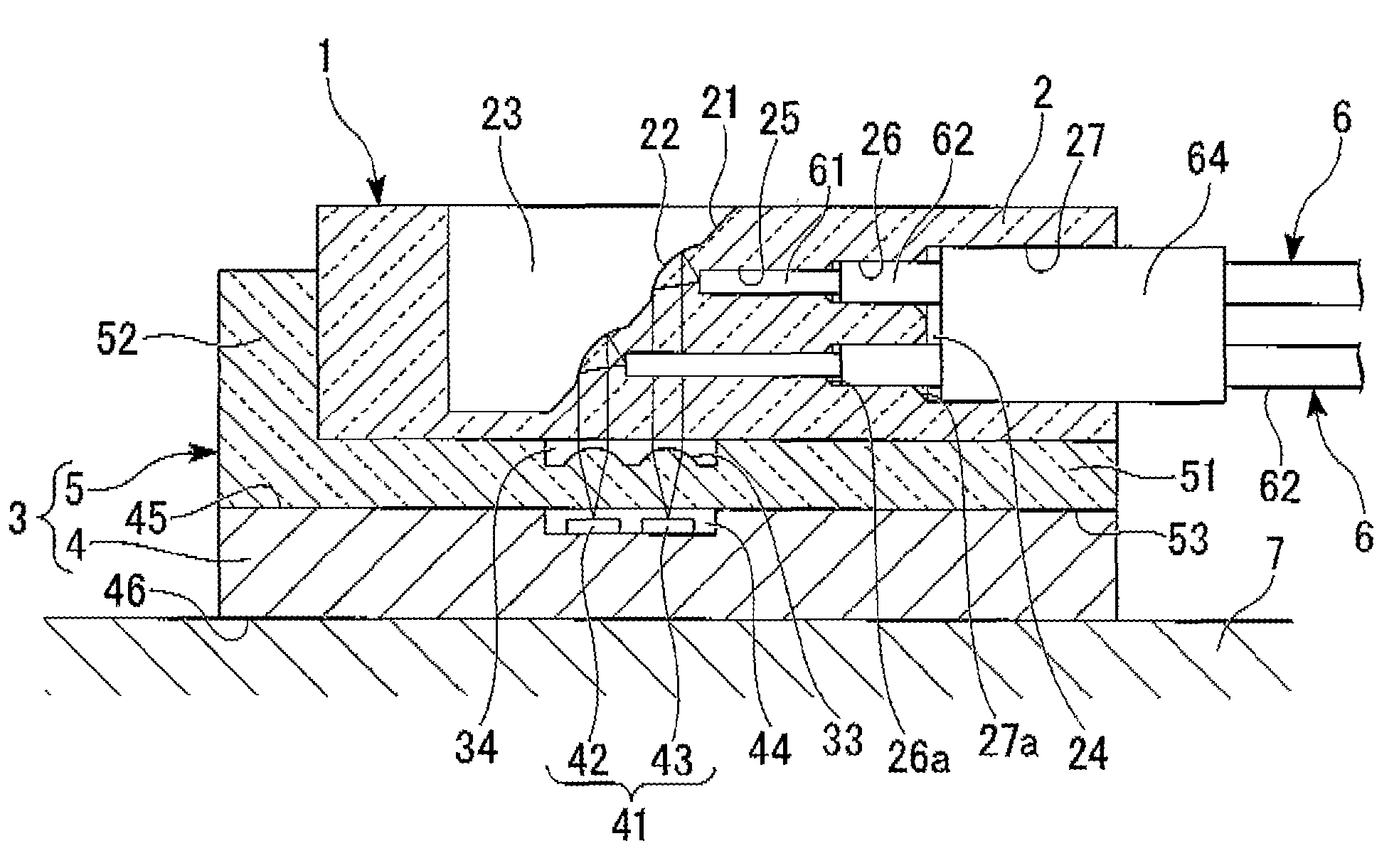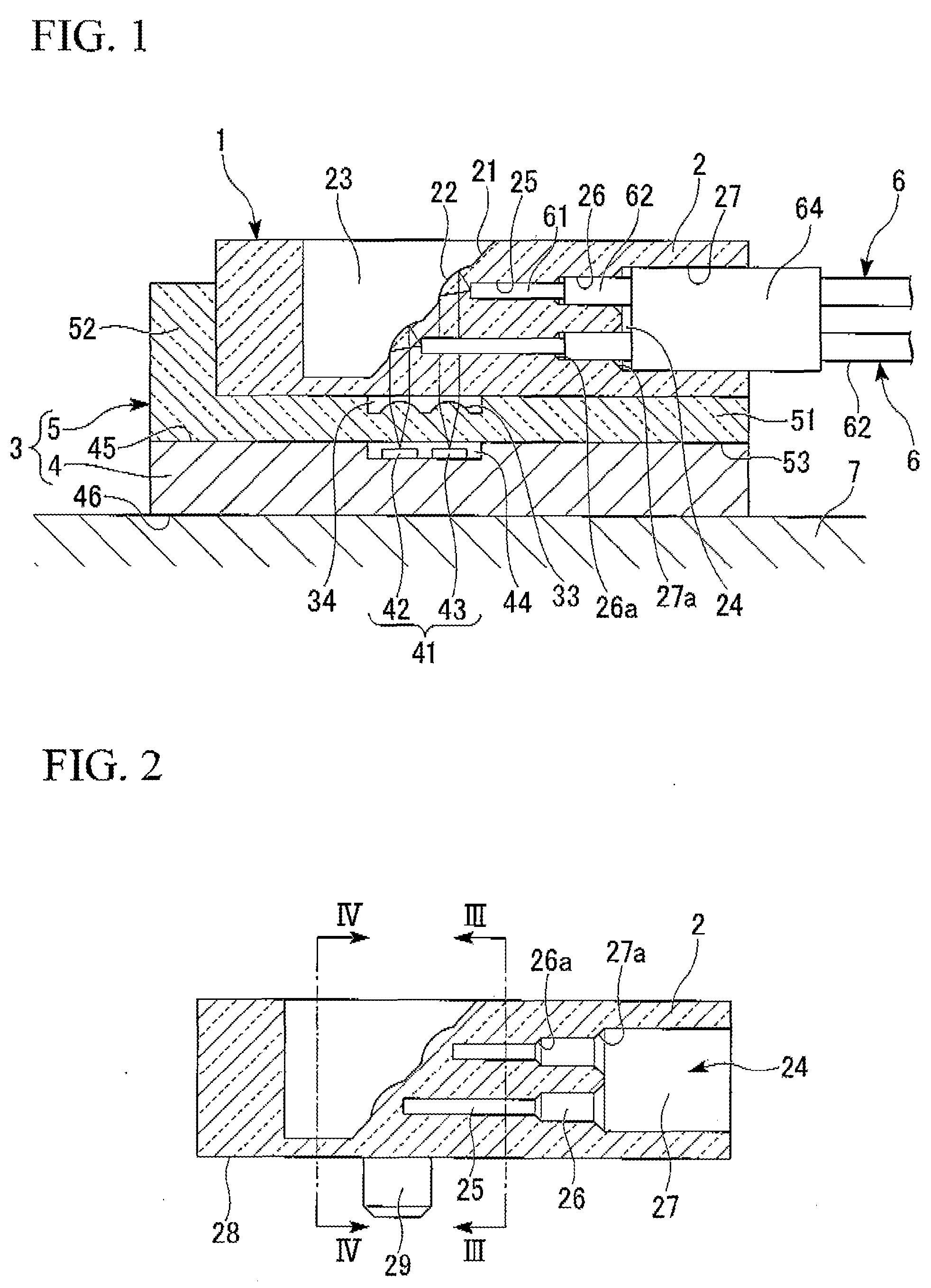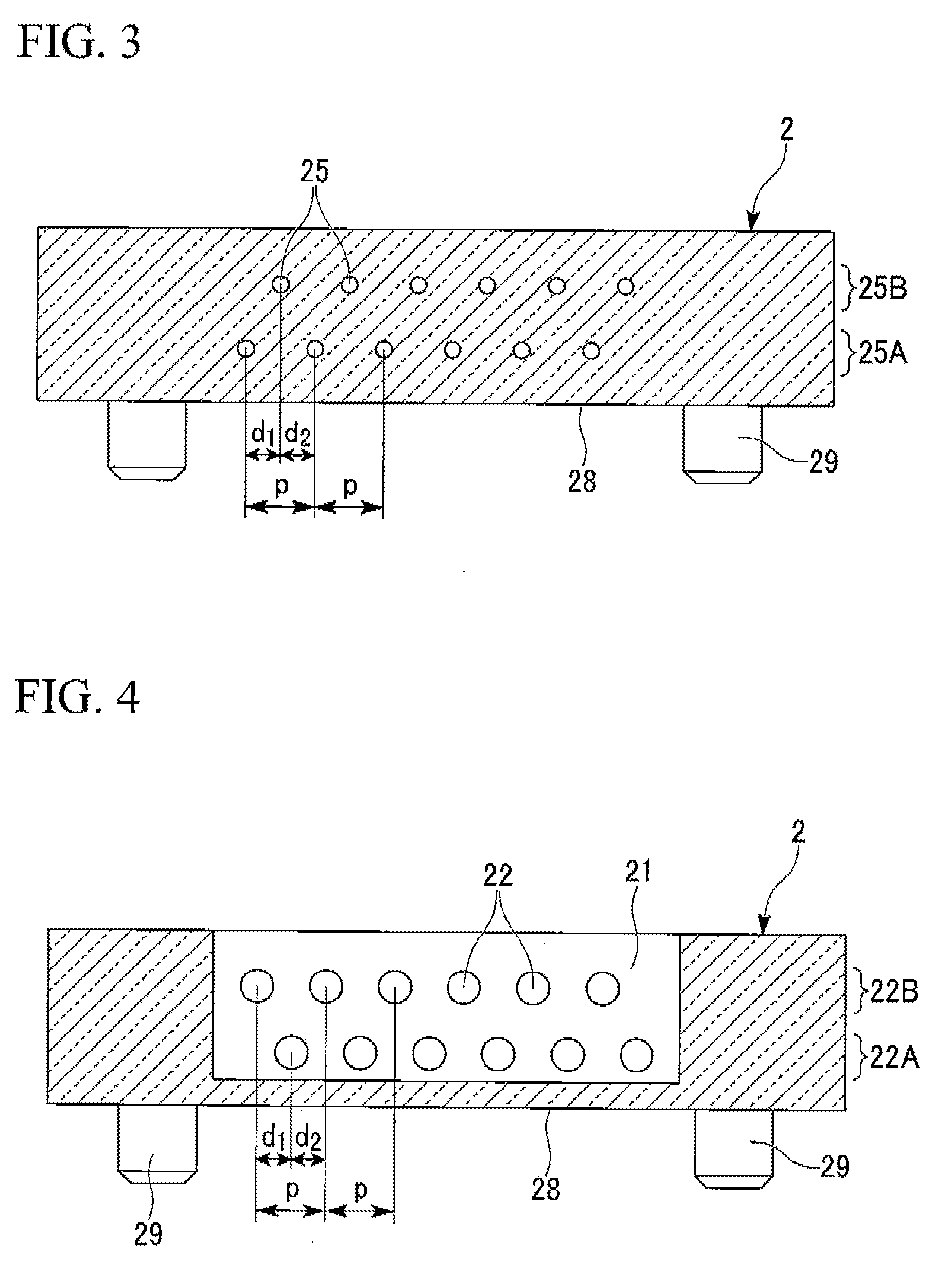Optical path change member and holding member body
- Summary
- Abstract
- Description
- Claims
- Application Information
AI Technical Summary
Benefits of technology
Problems solved by technology
Method used
Image
Examples
first embodiment
[0040]Hereinafter, a first embodiment of the present invention will be described in detail with reference to the accompanying drawings.
[0041]FIG. 1 is a cross-sectional view of an optical path change member 1 according to the first embodiment of the present invention. As shown in FIG. 1, a holding member body 2 provided at terminals of multi-core optical fibers 6 arranged in two rows is attached to an optical module 3 (board) having a light-emitting device 42 and a light-receiving device 43 mounted thereon. FIG. 2 is a cross-sectional view showing the holding member body 2 constituting the optical path change member 1 according to the first embodiment of the present invention. FIG. 3 is a cross-sectional view of the holding member body 2 taken along a line III-III in FIG. 2. FIG. 4 is a cross-sectional view of the holding member body 2 taken along a line IV-IV in FIG. 2. In FIG. 4, an arrangement of first lenses 22 formed on a reflective surface 21 provided in the optical path chang...
second embodiment
[0093]Hereinafter, a second embodiment of the present invention will be described.
[0094]While in the embodiment shown in FIGS. 3 and 4, the optical-fiber insertion holes 25 and the first lenses 22 are arranged in two rows, the optical-fiber insertion holes 25 and the first lenses 22 may be arranged in three or more rows according to the present invention.
[0095]When the optical-fiber insertion holes 25 are arranged in three or more rows, the positions of the optical-fiber insertion holes 25 are shifted from each other at least between adjacent ones of the rows. Accordingly, an interval between the optical fiber of the upper row and the optical fiber of the lower row is broadened, and thus, interference of noise or signal light can be prevented for an excellent optical connection.
[0096]FIG. 5 is a cross-sectional view of the holding member body 2 in which first lenses 22a are arranged in three rows as the multi-core optical fibers 6 are configured in three rows according to the second...
third embodiment
[0100]Hereinafter, a third embodiment of the present invention will be described.
[0101]FIG. 7 is a cross-sectional view showing an optical path change member 1A in which first lenses are not formed on a reflective surface 21A. The optical path change member 1A has the same configuration as the optical path change member 1 shown in FIG. 1 except that the first lenses are not formed on the reflective surface 21A of a holding member body 2.
[0102]The reflective surface 21A is allowed to be formed flat and optically connects multi-core optical fibers 6 with light input and output ends 41 using inner-surface reflection.
[0103]It is preferable that since parallelization of light by the first lenses is not performed in the optical path change member 1A, the optical paths 30 of optical fibers 61 have the same length to prevent beam diameters of lights of the optical, fibers 61 from being non-uniform. For example, it is preferable that optical paths 30A and 30B of optical fibers 61A and 61B in...
PUM
 Login to View More
Login to View More Abstract
Description
Claims
Application Information
 Login to View More
Login to View More - R&D
- Intellectual Property
- Life Sciences
- Materials
- Tech Scout
- Unparalleled Data Quality
- Higher Quality Content
- 60% Fewer Hallucinations
Browse by: Latest US Patents, China's latest patents, Technical Efficacy Thesaurus, Application Domain, Technology Topic, Popular Technical Reports.
© 2025 PatSnap. All rights reserved.Legal|Privacy policy|Modern Slavery Act Transparency Statement|Sitemap|About US| Contact US: help@patsnap.com



